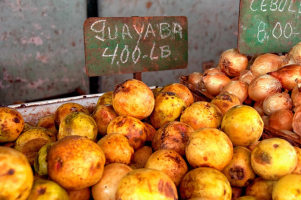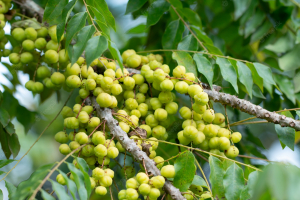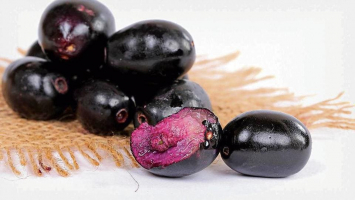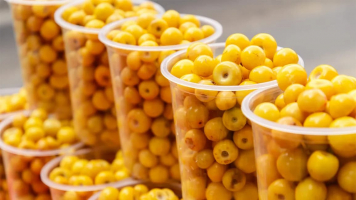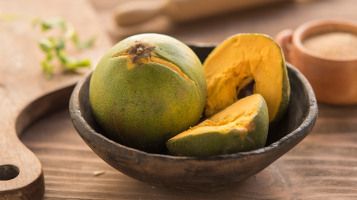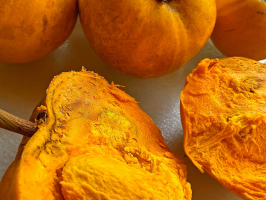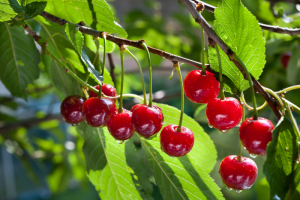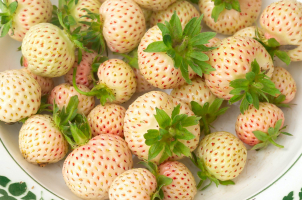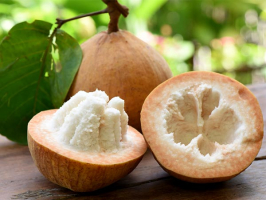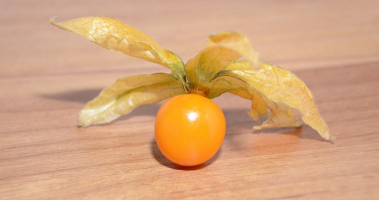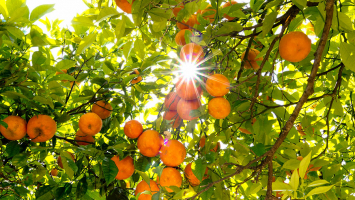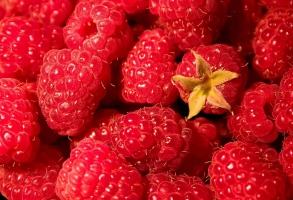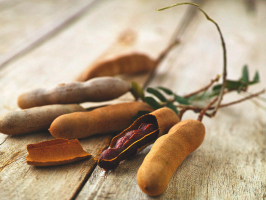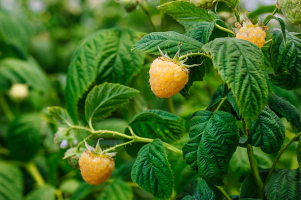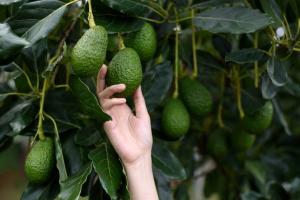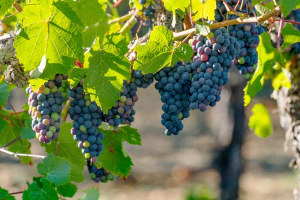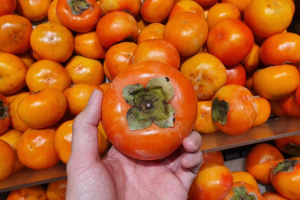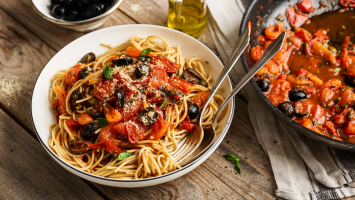Top 5 Most Delicious Brazilian Fruits
Fruits in Brazil are one of the reasons many visitors come to this beautiful country. Brazil offers a variety of delicious fruits which are eaten raw and also ... read more...served for breakfast, snacks and as dessert after the meal. Brazil has become one of the major fruit-producing countries in the world. There is more than 300 kind of fruits found in Brazil. Below are the most delicious Brazilian fruits, let's find out!
-
Cashew fruit, botanically classified as Anacardium occidentale, grows on evergreen trees that can reach fourteen meters in height and belongs to the Anacardiaceae family along with mangos. Also known as the Cashew apple or Marañón in Centralshew fruit is considered to be an “accessory” or “false” fruit, which means it does not encase the seeds of the plant inside the flesh. In Brazil, people usually use cashew pulp in processing fruit drinks or liquor. In addition, it appears widely in local Brazilian recipes, such as sauteed okra and stews. You will prefer the amazing taste of cashew jams, chutneys, and other desserts in Brazil.
The cashew fruit is bulbous, oval to pear-shaped, and small to medium in size, measuring 5 to 11 cm on average. The yellow flesh is stringy on the outside yet spongy, fibrous, juicy, and tender on the inside. The sweet, tropical aromas of cashew fruit are intensely fragrant and blended with an astringent flavor. Many people compare the fruit's flavor to a concoction of bell pepper, strawberries, cucumbers, and strawberries. The well-known cashew "nut" is a kidney-shaped, green seed that is enclosed in a double-hulled shell that is attached to the bottom of the fruit. It is important to note that within the shell, there are harmful substances that can cause a rash and irritation on the skin if touched, so care and prevention should be taken if handling the raw shell.
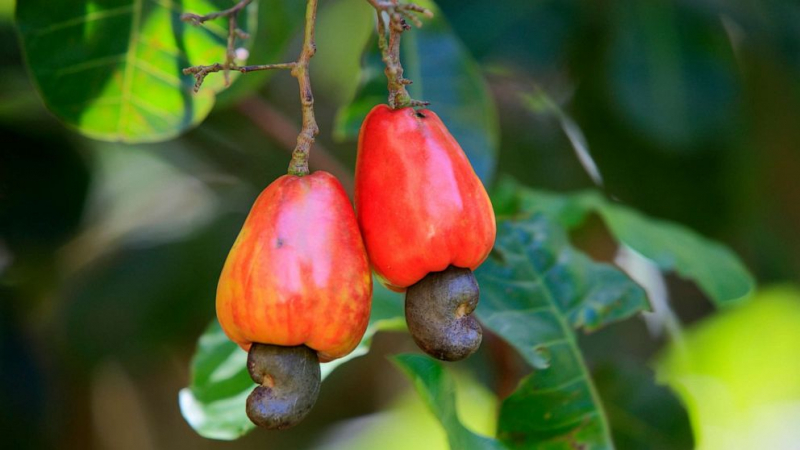
Vinut 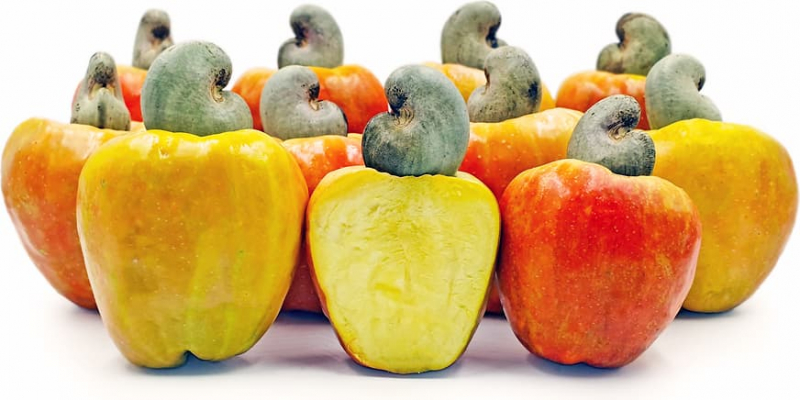
Specialty Produce -
Mauritia flexuosa, known as the moriche palm, ité palm, ita, buriti, muriti, miriti (Brazil), canangucho (Colombia), or aguaje (Peru), is a palm tree. It grows in and near swamps and other wet areas in tropical South America. Thanks to its nutritional value, people consider it the “Tree of Life” in Brazil. This excellent palm fruit is good for making jams, juice, ice cream, snacks, and wines. You can find many delicious Brazilian desserts made from these fruits. In particular, its oil is an excellent element to improve your skin health, so it is used commonly in cosmetic products.
A tree called Mauritia flexuosa has a maximum height of 35 meters (115 feet). A circular crown is formed by the broad leaves. The yellowish flowers bloom from December through April. The fruit has a chestnut color and is covered in shiny scales. It grows from December to June. A hard, oval nut is covered by yellow flesh. The seeds float, and this is the means by which the palm tree propagates. In natural populations, the tree reaches very high densities. Consumable moriche palm fruit, also known as morete in Ecuador's Oriente region, is harvested in Peru at a rate of more than 50 tonnes a day for use in juice, jam, ice cream, sweets, and snacks. The inflorescence buds are used like a vegetable, and either fresh or fermented sap can be consumed (see palm wine). Local manufacturers use the fibers from the tree to create threads and ropes. Palm weevils that burrow in tree trunks are eaten by people.

Zoom's Edible Plants 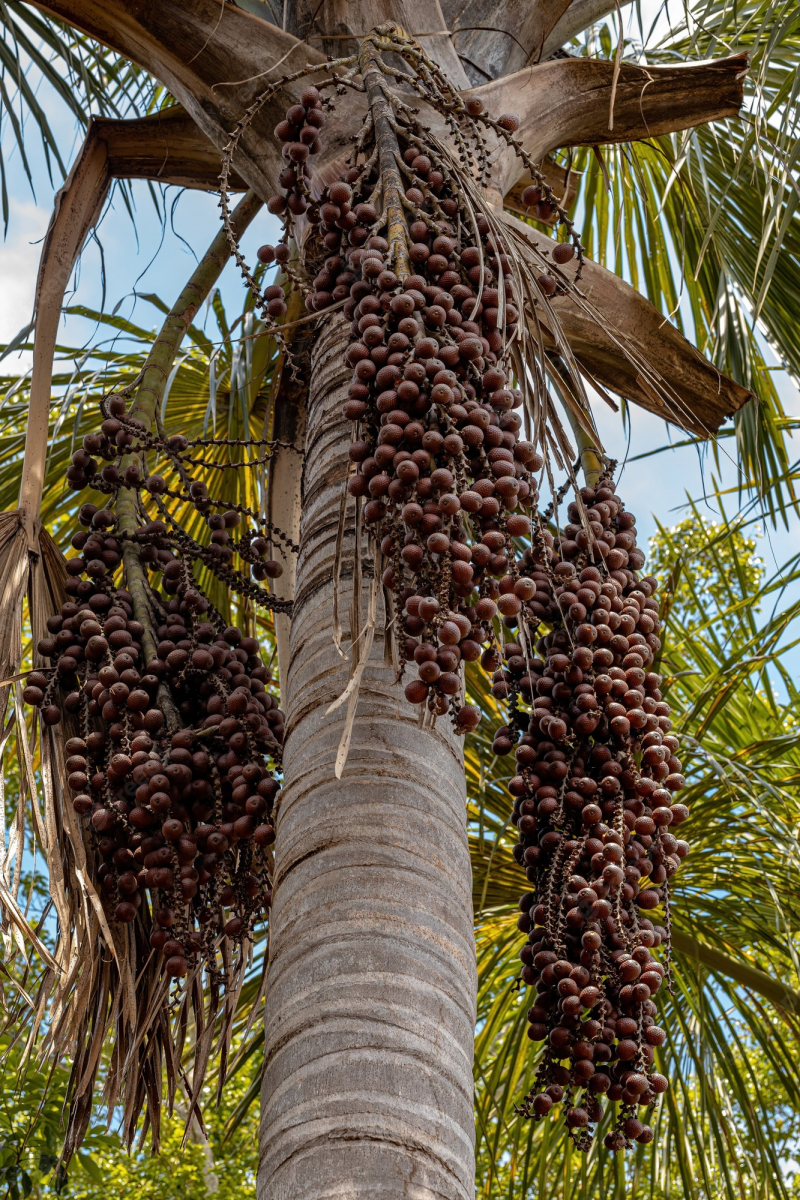
Freepik -
Cupuaçu (Theobroma grandiflorum), also known as cupuassu, is related to the cacao tree. Native to the Amazon, this tree grows up to 65 feet (20 meters) high. Its fruit is the national fruit of Brazil, which is the world’s largest cupuaçu producer. The fruit is ovular with a brown rind and white, fleshy pulIts flavor is compared to chocolate with hints of tropical fruit like melon or pineapple. Cupuaçu is commonly used in desserts or pressed into a juice. In addition, its seeds are pressed to extract a nutrient-rich fat that’s used as a cooking oil or beauty treatment.
The majority of cupuaçu trees are self-incompatible, which can lead to decreased pollination levels and, as a result, a decrease in fruit yields. Pollination can also be negatively impacted by environmental factors. Cupuaçu flowers are structurally complex and require pollination from biotic vectors. Heavy rains prevent pollinators, such as chrysomelid weevils and stingless bees, from flying between flowers. The juice primarily tastes like pear, banana, passion fruit, and melon. Chocolate made from cupuaçu, which is very similar to chocolate made from cocoa, is known as cupulate.
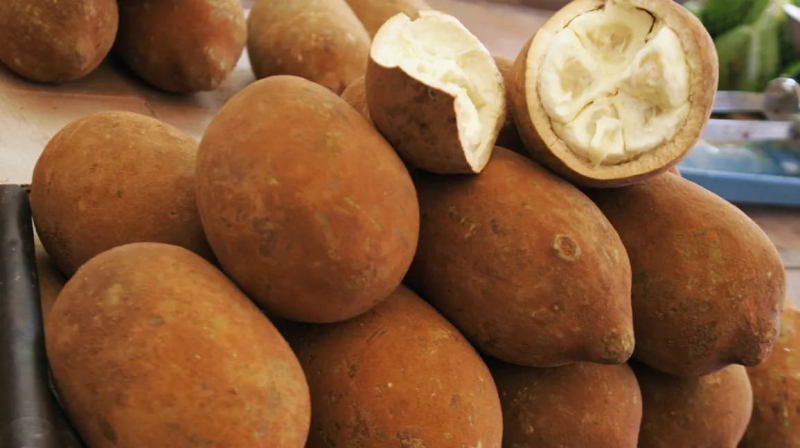
Healthline 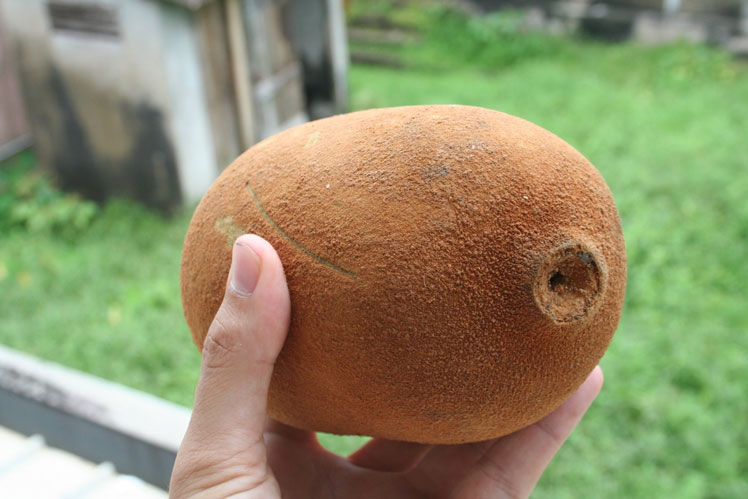
FactUm-Info -
Guaraná is a climbing plant in the family Sapindaceae, native to the Amazon basin and especially common in Brazil. Its name originates from the word “Guara-na” which means “eyes of the Gods” or “Fruit like the eyes” in the Guarani language. It appeared in Europe in the 16th century, and Spaniard Chroniclers brought it to this continent. This fruit exists in red or brown hues. It looks dominant with black seeds that have white arils. Its appearance resembles eyeballs. In particular, you can find a large amount of caffeine content in its seeds when it is six times higher than coffee.
The fruit's color can range from brown to red, and its black seeds are partially encased in white arils. The Sateré-Mawé people have an origin myth based on the color contrast when the fruit is cut open, which has been linked to the appearance of eyeballs. There are many energy drinks containing their seeds. It is the main component in many soft drinks in Brazil, and its name is a synonym for soft drinks. You should try the excellent herbal teas made from Guarana when coming to Brazil.
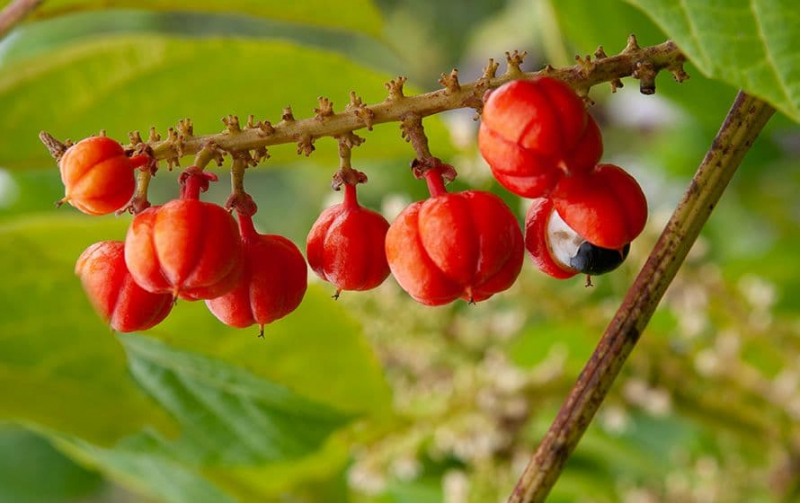
iStock 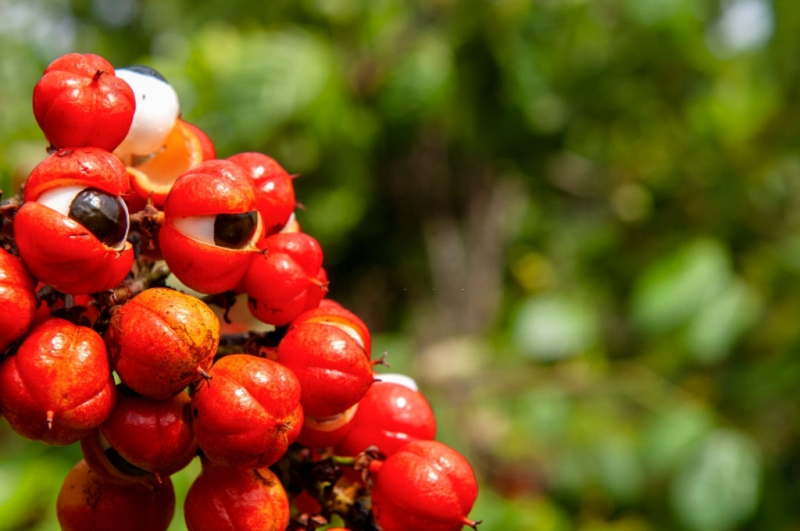
Blog Soin et Nature -
Surinam cherries are also known as Brazilian cherries, Florida cherries, Cayenne cherries, and Pitanga cherries. Historically, the plants were grown as ornamental hedges, but some consumers gather the fruits as a culinary ingredients and incorporate them into baked goods, desserts, preserves, and sauces. The fruits will have a sweet-tart, acidic flavor with mild, earthy, and subtly bitter nuances, sometimes reminiscent of the vegetal earthiness found in green bell peppers. Surinam cherries have an unusual, often polarizing flavor, with some consumers appreciating the flavor, while others find it an acquired taste.
Small Surinam cherry with an oval to spherical, somewhat flattened look, measuring 2 to 4 centimeters in diameter on average. Each fruit's skin is thin, smooth, delicate, and glossy, and it is strongly ribbed with seven to eight vertical ridges. Depending on the variety, the fruit's surface will change from green, orange, and red to red-blue and crimson when it is ripe. It is crucial to remember that Surinam cherries should only be eaten when fully ripe. Fruits that aren't ripe will taste acrid, nasty, sour, and bitter. The flesh is orange-red, watery, soft, and sticky behind the skin and contains one to three flat seeds that should be thrown away. Surinam cherries are delicate to the touch and easily come off the stem when they are fully ripe.
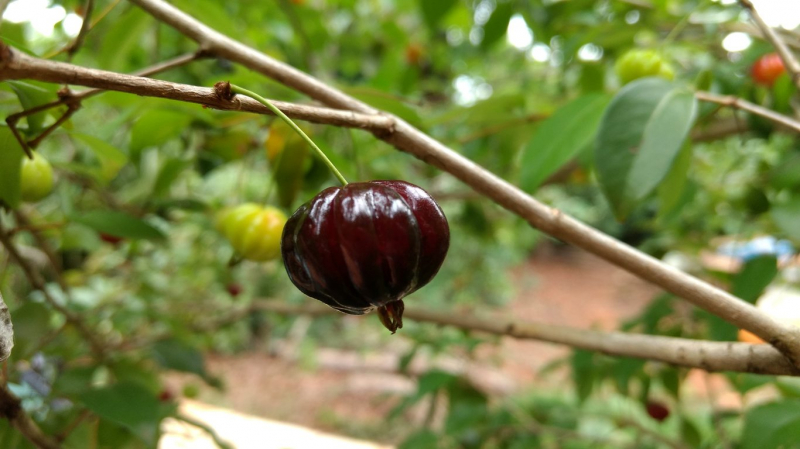
Gardening Know How 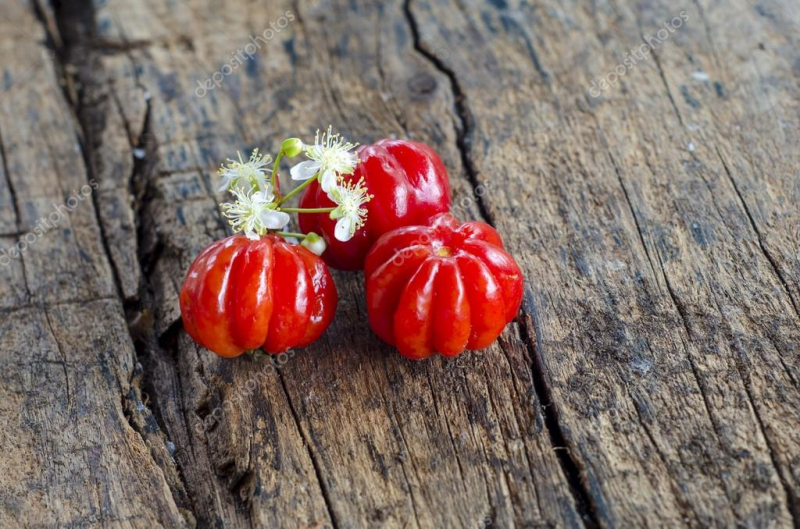
Plant Instructions







